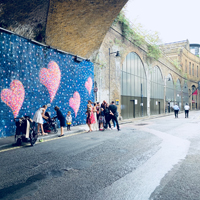Public Transportation in Cambridge
Summary: Mastering the public transportation system in Cambridge is a crucial aspect of adapting to life there. This article provides a detailed overview of the available local transit options.
Cambridge, is a city renowned for its prestigious university, historic architecture, and picturesque scenery. Public transportation in Cambridge is well-developed and offers a variety of options, including buses, trains, and an extensive network of cycling paths. The primary bus service is operated by Stagecoach East and the Go Whippet, while the train services are provided by Great Northern and Greater Anglia, connecting Cambridge to London and other major cities. For those considering a move to Cambridge, the question often arises: is it feasible to live without a car? The answer is a resounding yes. The city's compact size and comprehensive public transport system make it entirely possible to navigate without personal transport, and many residents and students choose to walk or cycle to their destinations.
Buses
The bus system in Cambridge is the backbone of the city's public transportation network. Stagecoach East offers the most extensive service, with routes that cover the city and extend to surrounding areas. The buses are frequent, reliable, and offer a cost-effective way to travel. For example, the Busway service provides a quick and efficient route from the city center to the nearby towns and villages, utilizing a guided busway that avoids traffic congestion. The Citi network of buses connects major points within the city, such as the railway station, shopping centers, and residential areas. Prices are reasonable, with various ticket options available, including day passes and weekly or monthly tickets for regular commuters. The buses are generally safe at all hours, with many routes offering night service, making them a viable option for those returning from late shifts or social events.
Trains
Cambridge is well-served by its railway station, which provides excellent connectivity to the rest of the UK. Great Northern and Greater Anglia operate services to London King's Cross and Liverpool Street, respectively, with journey times of around an hour, making it a popular choice for commuters. The trains also connect to other major cities and regions, including Norwich, Birmingham, and Stansted Airport. The station itself is equipped with facilities such as bike parking, car hire, and taxi services, ensuring a smooth transition from train to local transport. Train travel can be more expensive than buses, but booking in advance and using railcards can offer significant savings. The trains are generally considered safe, with CCTV and staff present, and are a popular choice for students and professionals alike.
Cycling
Cambridge is often referred to as the cycling capital of the UK, and for good reason. The city boasts an extensive network of cycle paths and lanes, making it incredibly cycle-friendly. The flat terrain and compact urban layout encourage cycling as a primary mode of transport for many residents. There are numerous bike shops, rental services, and ample bike parking throughout the city. Cycling is not only a healthy and environmentally friendly way to get around, but it's also often the fastest mode of transport within the city center. The local council has invested in cycling infrastructure, ensuring that routes are well-maintained and safe for cyclists of all ages and abilities. Stories abound of students and academics alike who prefer to cycle to their lectures and meetings, highlighting the integral role that cycling plays in Cambridge's daily life.
Walking
Walking is another popular mode of transportation in Cambridge, especially given the city's historical charm and pedestrian-friendly areas. Many of the city's attractions, such as the University of Cambridge colleges, museums, and the River Cam, are within walking distance of each other. The city center is largely pedestrianized, providing a pleasant and safe environment for walking. Residents often choose to walk to work or to the shops, enjoying the scenic routes that take them past ancient buildings and green spaces. Walking tours are a common sight, with guides leading groups through the city's storied streets, sharing tales of Cambridge's rich history.
Conclusion
In conclusion, Cambridge offers a robust public transportation system that caters to the needs of its residents and visitors. Whether by bus, train, bicycle, or on foot, getting around the city is convenient and accessible. The emphasis on cycling and pedestrian zones reflects Cambridge's commitment to sustainability and its reputation as a city that values its environment and the well-being of its inhabitants. For expats and locals alike, living in Cambridge without a car is not only possible but often preferred, allowing them to fully embrace the city's vibrant culture and lifestyle.
About the Author
 Betsy Burlingame is the Founder and President of Expat Exchange and is one of the Founders of Digital Nomad Exchange. She launched Expat Exchange in 1997 as her Master's thesis project at NYU. Prior to Expat Exchange, Betsy worked at AT&T in International
and Mass Market Marketing. She graduated from Ohio Wesleyan University
with a BA in International Business and German.
Betsy Burlingame is the Founder and President of Expat Exchange and is one of the Founders of Digital Nomad Exchange. She launched Expat Exchange in 1997 as her Master's thesis project at NYU. Prior to Expat Exchange, Betsy worked at AT&T in International
and Mass Market Marketing. She graduated from Ohio Wesleyan University
with a BA in International Business and German.
Some of Betsy's articles include 12 Best Places to Live in Portugal, 7 Best Places to Live in Panama and 12 Things to Know Before Moving to the Dominican Republic. Betsy loves to travel and spend time with her family. Connect with Betsy on LinkedIn.
Additional Information:
- Expat Guide to Cambridge
- Retire in Cambridge Guide
- Best Markets in Cambridge
- 7 Tips for Living in Cambridge
- Pros & Cons of Living in Cambridge
- Cost of Living in Cambridge
- Health Care in Cambridge
- The Insider's Guide to Cambridge
- 5 Tips for Living in Cambridge, England
- Healthcare & Health Insurance in UK
- Best Places to Live in UK
- Real Estate in UK
- Pros & Cons of Living in UK
- How to Rent a Home in England
- What It's Like Living in Cambridge
- Pros and Cons of Living in UK 2025




